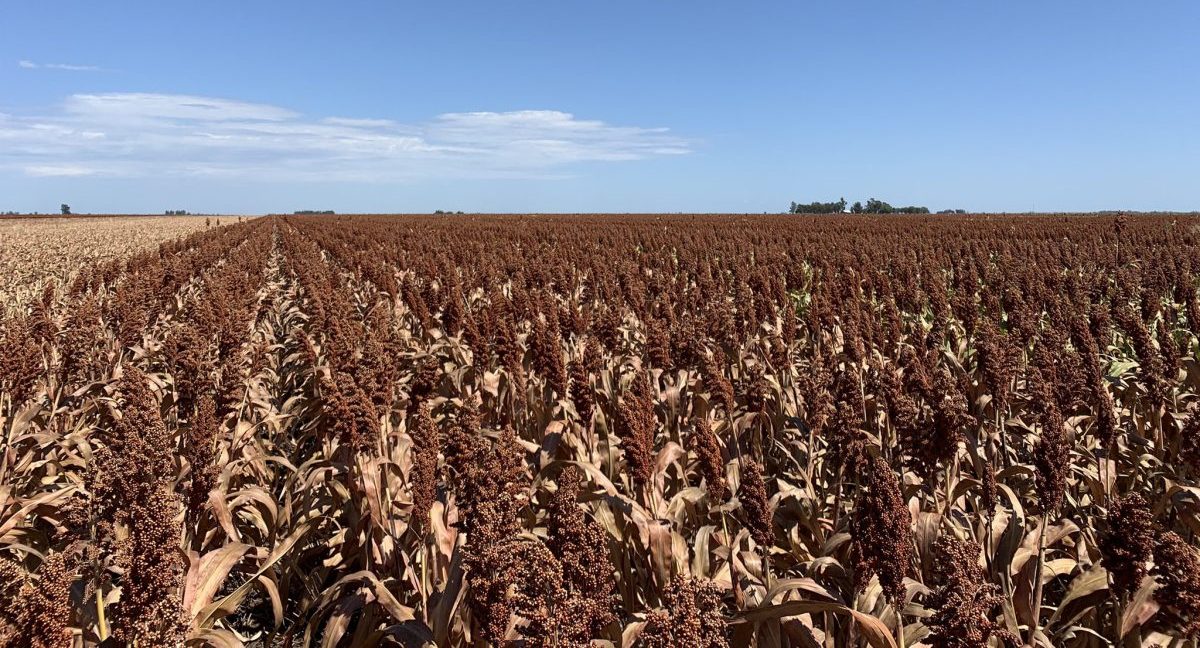
Harvest of sorghum on Queensland’s Central Downs is gathering pace as crops ripen amid hot and dry weather.
SOLID export demand for wheat in southern markets and sorghum in the north has lifted values in the past week, with gains of $12-$15 per tonne seen.
Domestic consumers are mostly immune from the price hike, as they are well covered for nearby requirements.
Trade sources report trucks are in ready supply and freight rates are up to 20 percent cheaper than they were this time last year, which gives consumers no concern about booking up and taking delivery of tonnes in coming week.
The exception is on the run to the Port of Brisbane, where sorghum is being accumulated for bulk export, and containers loaded up-country are also on their way to port.
| Today | Feb 23 | |
| Barley Downs | $405 | $403 |
| SFW wheat Downs | $405 | $405 |
| Sorghum Downs | $430 | $415 |
| Barley Melbourne | $370 | $365 |
| ASW Melbourne | $430 | $418 |
| SFW Melbourne | $425 | $415 |
Table 1: Indicative prices in Australian dollars per tonne.
North well covered
Rainfall in the grainbelt has been negligible in the past week, allowing growers to desiccate sorghum crops and make significant headway with harvest.
Sources report the flow of grain to where it needs to be is happening as scheduled for the first time in months now that all roads and paddocks have dried out.
While some export shorts exist to fill sorghum boxes and ships’ holds, trade on wheat and barley is subdued.
Stewart Grain Inverell trader Robert Quinn said logistics is running efficiently, and volume traded is moderate to thin.
“There’s not a lot moving,” Mr Quinn said.
“There’s no urgency in anything, and the feedlots have accessed and ordered the grain they need.
“Everyone’s getting five-day weeks on logistics, and that’s helping.”
Some growers are harvesting sorghum, but otherwise have time available to cart their own grain to consumers, packers or port.
Dry conditions since December have reduced the need for growers to spray weeds, further freeing up time to jump in the truck and deliver a load or two of what has been stored on farm.
Mr Quinn said softer freight rates were allowing traders to book barley from north-central New South Wales for delivery into the border region and southern Queensland.
He said dry conditions, normal for this time of the year in the New England but not seen in recent years, have some graziers inquiring on supplementary feed for their sheep and cattle.
“It won’t change the S&D too much…but we’re starting to get a few phone calls from people about cottonseed, barley, and faba beans.”
Cottonseed values have firmed in the past week.
“Old-crop seed is tight and values are high,” Woodside Commodities managing director Hamish Steele-Park said.
“That’s mainly due to the fact it’s the end of the season and ginners want to clean sheds out before new-crop supplies arrive.
“A big export program has also meant stocks remaining low.”
Mr Steele-Park said values for US cottonseed have drifted lower over the past month to make it more competitive against Australian product in Asian markets.
The delayed planting of the NSW cotton crop means northern NSW will not start ginning until May, some weeks later than normal.
“However Central Qld will come on line in April sometime.”
Prompt cottonseed is trading at around $495-$500/t delivered Downs, while new-crop is sitting at around $470-$475 May-July.
South quiet
Export demand for lower-protein wheat has lifted values in the southern market to levels above where domestic consumers are keen to buy volume.
“It’s a little bit slow, and there’s not a lot of liquidity,” one trader said.
While growers have a mix of grades and commodities on farm left to price, they appear to be in no hurry to sell them, and in general are believed to have sold more than half their warehoused grain.
The south has also seen some hot and dry weather, and mixed farmers are feeding faba beans, lupins and downgraded barley to their own stock.
At Young in NSW, Grain Focus director Michael Jones said some growers were keen sellers of warehoused grain last month, but have backed off volume selling.
Due to canola’s softening market during harvest, Mr Jones said growers have gone against the usual pattern by holding canola and selling wheat, and stocks of grain on farm appeared to be modest.
“The quality was there in grain at harvest, and there was no reason for growers to keep it on farm,” Mr Jones said.
Grain Central: Get our free news straight to your inbox – Click here

HAVE YOUR SAY